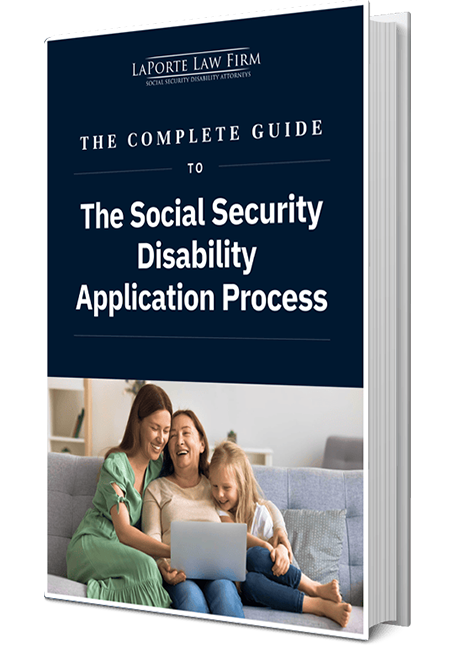
Applying for Social Security disability benefits, whether it is Social Security Disability Insurance (SSDI) or Supplemental Security Income (SSI), can be confusing, overwhelming, and yes, often very slow. The Social Security Administration (SSA) receives millions of claims each year, and with limited resources and a multistep review process, delays are extremely common.
So, if you have checked your SSA status online and have seen the word “pending” for too long, you are certainly not alone. It is completely normal to feel frustrated by the delay and unsure about the next steps. But what exactly does a pending status mean?
Understanding the pending status on your disability claim can take away some of the mystery and help you better manage your expectations. In this article, we will walk you through what this status process means, why your claim might still be pending, how long it typically takes, and what you can do to stay proactive while you wait.
Reasons for a Pending Status
A pending status simply means that your claim is still under review and no final decision has been made yet. But the reasons behind that status can vary widely. Here are the most common causes:
Documentation review and verification
After you submit your application, the SSA begins reviewing your medical records, work history, and application forms. If anything is incomplete, inconsistent, or difficult to verify (such as handwritten records or treatment from multiple providers), your claim may get delayed.
Medical evaluation delays
Sometimes, the SSA needs more information than what your records provide. If this happens, they may schedule a consultative exam (CE) with a doctor they contracted. Scheduling these exams, receiving the reports, and reviewing the results can add weeks, or even months, to the process.
Administrative backlogs
SSA offices across the country are overwhelmed. Some field offices and DDS (Disability Determination Services) locations handle more applications than others, leading to significant wait times, even for simple cases.
Incomplete application submissions
Missing or incomplete forms, unsigned documents, or unanswered questions can prevent your claim from moving forward. The SSA won’t process your claim until the required information is submitted.
Analyst assignment pending
Before your file can be reviewed, it needs to be assigned to a DDS analyst or medical consultant. Your claim could sit in a queue for weeks or months before someone picks it up for review.
In queue for ALJ assignment
If your case is denied and you file an appeal requesting a hearing, there may be a long wait before an administrative law judge (ALJ) is assigned. Depending on your region, this can take several months to over a year.
Decision writing in progress
After a hearing, your claim enters the “decision writing” phase. At this point, the ALJ has heard your case but hasn’t finalized or written the decision yet. This stage can last 1–3 months or more, depending on the judge’s caseload.
How to Check Your Status
Staying informed can make a big difference. Fortunately, there are several ways to monitor your application status:
Online status check tools
Visit ssa.gov and log in to your my Social Security account. From there, you can view your application status, including any recent updates or requests for more information. A my Social Security account also provides access to your earnings records, estimated benefits, and correspondence from the SSA.
Using SSA hotlines
You can call the SSA’s toll-free number: 1-800-772-1213 (TTY: 1-800-325-0778). Be sure to have your Social Security number and application details ready. Calls are typically more useful when your online portal doesn’t show specific updates or when you’ve been waiting longer than expected.
Visiting or contacting your local Social Security office
In-person visits may be helpful when your claim is delayed or if you are having trouble getting answers. However, you must call your local office to make an appointment first. Bring a current photo ID and any notices you have received, or pertinent information regarding your pending claim. To find out which SSA office is handling your claim, use the Social Security Office Locator tool by entering your ZIP code.
Typical Duration of Pending Status
There’s no one-size-fits-all answer when it comes to how long your claim might stay pending. But here are some general timeframes:
Initial applications can take, on average, 6–8 months according to the SSA’s current estimates.
The current wait time for a reconsideration decision is typically between 6 and 12 months, though it can vary by location. Some sources indicate an average of around 7 months, while others suggest it could be longer, potentially up to 9–12 months, due to processing backlogs in each state or region. The Social Security Administration reports an average processing time of approximately 284 days (around 9.5 months) for reconsideration appeals.
Hearing-level appeals typically take about nine months. According to SSA data, the current average wait time for an ALJ hearing is approximately 8.8 months, though this varies widely by location. In some regions, wait times may exceed a year, while others move more quickly. After the hearing, it usually takes an additional 1–3 months to receive a written decision, depending on the judge’s workload and the complexity of the case. Some decisions are issued sooner, while others, especially those requiring additional evidence or a supplemental hearing, can take six months or even more.
If your condition qualifies for Compassionate Allowance, you may receive a decision in just a few weeks. Conditions such as ALS, certain cancers, or severe brain disorders typically qualify you for Compassionate Allowance. You can check the SSA’s Compassionate Allowances Complete List of Conditions to see if you meet the criteria for eligibility.
Factors influencing processing duration
Several factors can influence how long your Social Security disability claim remains in pending status. The complexity of your medical history and the completeness of your medical evidence play a significant role. For example, claims that require extensive documentation or clarification from multiple providers often take longer to process.
Backlogs at your state’s DDS office can also contribute to delays, as some offices handle higher volumes of claims than others. Additionally, the type of claim you have filed, whether it is SSDI, SSI, or a concurrent claim, can also affect timelines, as each program has different eligibility criteria and review procedures.
Finally, your place in the appeals process matters; cases at the reconsideration or hearing level generally take longer than initial applications.
How the five-step evaluation process affects pending status
The SSA uses a five-step sequential evaluation to determine whether an individual is disabled.
- Step 1 examines whether the applicant is currently working and earning more than the substantial gainful activity (SGA) limit.
- Step 2 considers whether the medical condition is “severe,” meaning it significantly limits basic work-related activities.
- Step 3 evaluates whether the condition meets or equals a listed impairment in the SSA’s Blue Book, or List of Impairments. If it does, the claim can be approved at this stage. If not, the process continues to Step 4.
- Step 4 assesses whether the applicant can perform any of their past relevant work. If they can, the case can be denied at this step. If they cannot, the review continues to Step 5.
- Step 5 considers whether the applicant can adjust to any other work in the national economy, based on their age, education, and residual functional capacity. This last step requires further analysis and more time to evaluate properly.
A “pending status” often indicates the current stage of your application within the SSA’s five-step evaluation process. Your application may remain pending for an extended period while the SSA works to make a determination at any stage of this process.
The review of your case may take several weeks, or even months, depending on the availability of medical evidence, the complexity of the medical condition, and whether additional information or consultative exams are needed.
How Legal Representation Can Help
Disability law can be complex, so having an experienced disability attorney in your corner can help you navigate the process more smoothly, avoiding unnecessary delays that prolong your application’s pending status.
A disability attorney or representative can be a great asset in your application or appeal journey. They can ensure your forms are accurate and complete, gather critical medical records, communicate with the SA using the right language and terminology, inform you of recent changes in Social Security law and regulations, monitor the case status, and push for updates when appropriate. Experienced legal representatives also help ensure that all filings are accurate, complete, and submitted on time, reducing the risk of delays or denials due to technical errors. If your case proceeds to a hearing before an ALJ, they can help you prepare effectively, present strong supporting evidence, and navigate the legal nuances that may impact your chances of approval.
Common Mistakes to Avoid
Simple missteps can turn into major delays. Here are some pitfalls to watch out for that may cause your application to remain in pending status longer than necessary:
Submitting inaccurate or incomplete information
Always double-check your application before submitting it. Mistakes or vague answers can lead to denials or requests for clarification.
Failing to respond to requests promptly
The SSA may ask for more medical records or schedule a consultative examination. Ignoring these requests or responding late can delay your claim or result in a denial.
Missing critical deadlines
There are strict deadlines for appealing SSA denials. If your initial application is denied, you have 60 days from the date on the notice to file an appeal, plus an additional five days to account for mailing time. The same deadline applies if your claim is denied at the reconsideration stage; you must file a request for a hearing before an ALJ within 60 days of the date on the denial notice.
Missing these deadlines can jeopardize your case, potentially forcing you to start the entire process over or permanently losing your right to appeal. It is equally important to submit any requested documents by their deadlines to avoid delays or dismissals.
Importance of Staying Updated
Regularly checking your claim’s status, whether online through your mySSA account, by phone, or in person, can alert you to missed communications, errors in your file, or stalled progress. Proactive follow-up also demonstrates your continued interest in the case, which can sometimes help prevent your file from being overlooked or misplaced in a backlog.
Proactive measures to ensure progress
To help keep your Social Security disability claim on track, consider calling the SSA monthly for updates to ensure your case is still moving forward and hasn’t stalled. If you submit new medical records or evidence, follow up to confirm that SSA has received and added them to your file, as missing documentation can be a common source of delay.
Also, be sure to promptly update your contact information if your phone number, address, or email changes, so you don’t miss any critical notices or deadlines. Taking these simple actions can help prevent avoidable delays and keep your claim progressing smoothly.
How regular checks can expedite the process
In some cases, claimants discover that important forms were never received, consultative exam appointments were inadvertently missed, or critical deadlines were nearing, all simply because they took the time to check in. Staying actively involved in the process allows you to catch and resolve issues early, potentially avoiding delays or denials that could have been prevented.
Outcomes of a Pending Status
Eventually, every pending status will turn into one of the following:
Approval after pending status
If your claim is approved, you will first receive a notice of approval, followed by a formal award letter that outlines your monthly benefit amount and the date your payments will begin.
For SSDI beneficiaries, back pay is typically issued dating back to their established onset date of disability, which may include retroactive benefits depending on when they applied. SSI beneficiaries may also receive back pay, but it generally starts from the date of the application rather than the onset of disability, and payments are typically issued in installments if the amount is large.
Denial and next steps
If your claim is denied, the notice will clearly explain the reasons for the decision. Most denials result from insufficient medical evidence or the applicant not meeting the SSA’s strict definition of disability. You will then have 60 days from the date on the notice to file a request for reconsideration if you wish to appeal.
Appeal Stages for Denied Applications
If your claim is denied, here’s what the appeals process looks like:
Application stage overview
At the initial stage of a Social Security disability application, a significant majority of claims are denied. Statistics provided by the SSA indicate that approximately 65% to 78% of initial applications are denied. This means that for every 10 initial applications, roughly six to eight are initially rejected.
Reconsideration
This is the first appeal. A new examiner looks at your case, including any new evidence. Denials are common here, too, but it is a necessary step to reach the hearing level. The reconsideration stage of a Social Security disability claim has, in fact, a very low approval rate, with most claims being denied. Nationally, about 16% of cases are approved at the reconsideration level. This makes it one of the most challenging parts of the disability application process.
Hearing by an administrative law judge
You (and your attorney or representative) attend a hearing with an ALJof the Social Security Administration. You can present testimony, submit new medical evidence, and question expert witnesses. Approval rates are highest at this stage.
Post-hearing review
After the hearing, the judge writes a decision. This can take one to three months after the hearing date. If approved, payments will follow within 30–60 days after the decision. If denied, you can appeal to the Appeals Council (AC). In general, however, the approval rate for SSA disability cases at the AC level is relatively low, especially when compared to the ALJ hearing level.
If you need help or have questions, you can reach out to LaPorte Law Firm to discuss your case. Our experienced team understands how frustrating delays can be and knows how to navigate the Social Security process to keep your claim moving forward. Don’t wait and risk missing critical updates or deadlines — contact us today and get the guidance you need to move your case ahead.
FAQs
It varies. Initial decisions take about 6–8 months, depending on the region. However, appeals, especially hearings, can take a year or longer.
It means the Social Security Administration has not made a final decision yet. Your claim is under review at some stage of the process.
Yes, but with limitations. The SSA allows some work activity under substantial gainful activity limits ($1,620 per month in 2025 for non-blind individuals). Exceeding that could jeopardize your claim.
You can check online at ssa.gov, call SSA directly, or visit a local office. Setting up a mySSA account is the easiest way to monitor your status.
Follow up regularly. Contact the SSA or your local office, request a status update, or speak to a disability attorney or representative who can help escalate the issue if needed.
















